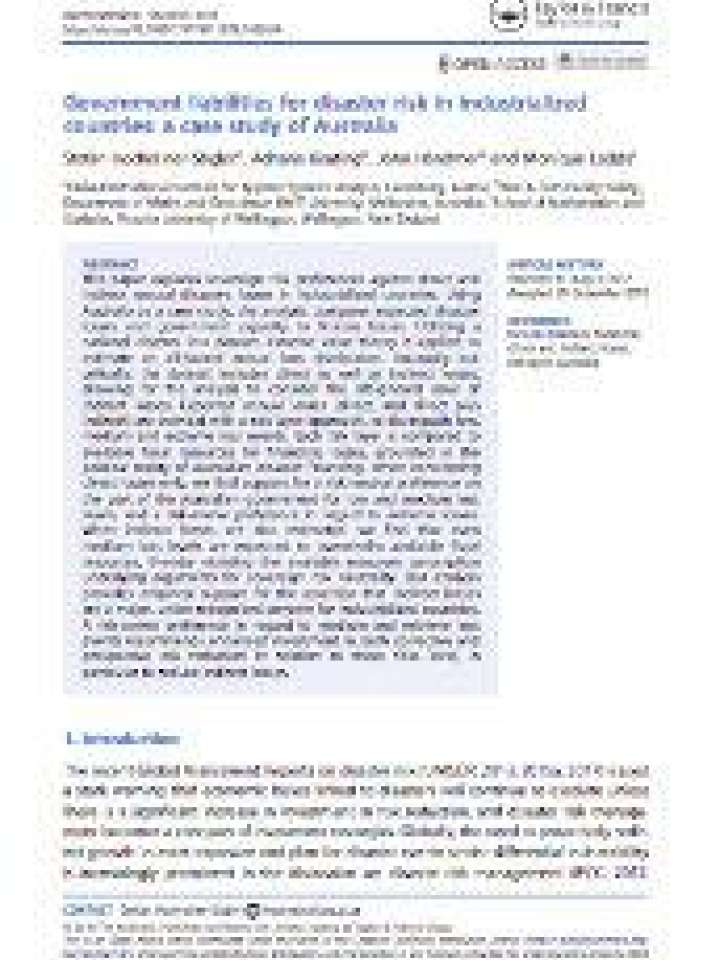Government liabilities for disaster risk in industrialized countries: a case study of Australia
This paper explores sovereign risk preferences against direct and indirect natural disasters losses in industrialized countries. Using Australia as a case study, the analysis compares expected disaster losses and government capacity to finance losses. Utilizing a national disaster loss dataset, extreme value theory is applied to estimate an all-hazard annual loss distribution.
Unusually but critically, the dataset includes direct as well as indirect losses, allowing for the analysis to consider the oft-ignored issue of indirect losses. Expected annual losses (direct, and direct plus indirect) are overlaid with a risk-layer approach, to distinguish low, medium and extreme loss events. Each risk layer is compared to available fiscal resources for financing losses, grounded in the political reality of Australian disaster financing. When considering direct losses only, this paper finds support for a risk-neutral preference on the part of the Australian government for low and medium loss levels, and a risk-averse preference in regard to extreme losses. When indirect losses are also estimated, this paper finds that even medium loss levels are expected to overwhelm available fiscal resources, thereby violating the available resources assumption underlying arguments for sovereign risk neutrality.
This analysis provides empirical support for the assertion that indirect losses are a major, under-recognised concern for industrialized countries. A risk-averse preference in regard to medium and extreme loss events recommends enhanced investment in both corrective and prospective risk reduction in relation to these risks level, in particular to reduce indirect losses.
Explore further

